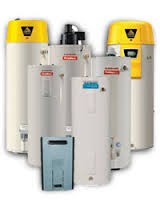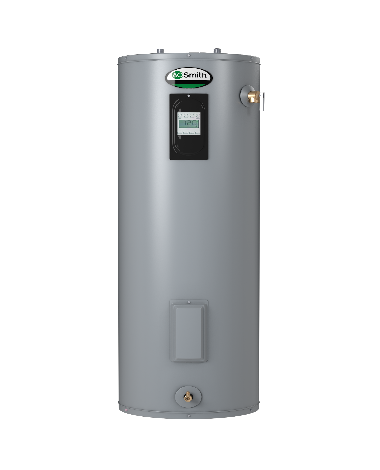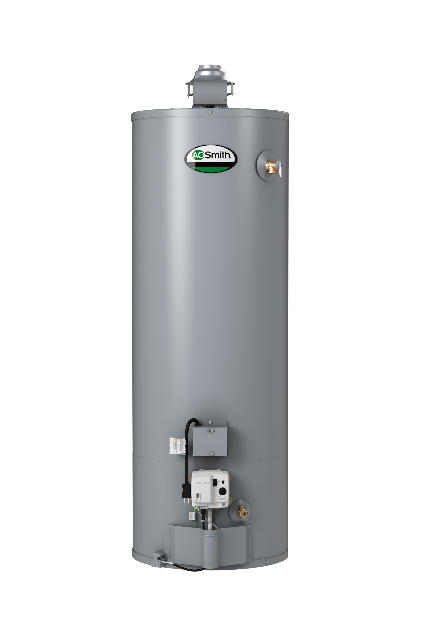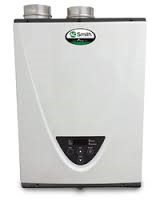Top Tips for Toilets
- WaterSense. The government’s WaterSense program is similar to its Energy Star program, except it covers water instead of energy. Toilets with the WaterSense label use 20% less water than the federal standard while providing equal or better performance. WaterSense-labeled toilets have been independently tested and verified to meet the program’s criteria for water efficiency and excellent performance.
- Dual-flush toilets. Popular in many parts of the world since the 1980s, dual-flush toilets are a great way to save water that is still unknown to many Americans. They use no more than 1.3 gallons per flush (gpf) on average and have two buttons or levers for flushing: for liquid waste and paper, there’s a low-volume flush (typically about 0.9 gpf); and for solid waste, there’s a standard flush (no more than 1.6 gpf). Replacing a regular 1.6-gpf toilet with a dual-flush toilet can save a family of four about 7,000 gallons per year. The savings will be even greater if replacing an older toilet.
- Performance. Some of the first generation low-flow toilets from the 1990s didn’t work well–and truth be told, a few of the low-flow toilets sold today aren’t up to snuff. Double flushing, blockages, and too much “streaking” on the bowl have made low-flow johns the butt of jokes and even prompted federal lawmakers to attempt, unsuccessfully, to repeal the low-flow mandate. Fortunately, toilet technology has advanced and there are many low-flow and HET models that offer excellent performance. Look for the WaterSense label–those toilets have been tested to meet the program’s criteria for flushing performance as well as water efficiency. If you have your eye on a toilet that doesn’t have the WaterSense label, look up the toilet model on the MaP testing report. MaP stands for Maximum Performance, a toilet testing protocol that measures how good the toilet is at bulk removal, in other words, how likely it is to clog. Download the MaP testing results from the California Urban Water Conservation Council’s website.
- Better bowls, trapways, flush valves. Better toilets typically have redesigned bowls, so that there’s a larger surface area of water in the bowl. They also have improved trapways (the S-shaped drainage pipe) to prevent clogging. Some models have a larger flush valve between the bottom of the tank and the bowl (3 or 3 ½ inches wide rather than the usual 2 inches), which provides a more forceful flush. And smoother porcelain surfaces keep the bowl cleaner.
Other Considerations
- When shopping for a new toilet, you’ll discover that there are three flushing technologies used: gravity (the most common), pressure-assisted, and vacuum-assisted. All are available as HETs, and there are good (and sometimes bad) performers in each category. Pressure-assisted toilets tend to have a more powerful flush than gravity toilets, but they’re much noisier. They can make a startling “whoosh” when flushed. Gravity toilets work well even if the home’s water pressure is low, while pressure-assisted models require good water pressure (at least 25 pounds per square inch). Vacuum-assisted models tend to flush very quietly, a plus if your home is small or the bathroom is located near public areas of the house.
- Urinals aren’t common in homes, but they can be water savers if you choose a high efficiency model. These use as little as one pint (0.125 gallons) of water per flush. Even better, choose a waterless urinal. They’ve been used in commercial buildings for more than 15 years and are starting to turn up in some homes. Waterless urinals typically have a low-density sealant fluid that sits in the urinal’s drain, letting urine pass through while keeping odors from coming back up through the drain.
- You’re not alone if you don’t know what a bidet is. Common in some cultures but relatively unknown to Americans, bidets are used for a sit-down wash after you’ve used the toilet. It doesn’t use energy, but could be a small drain on your water resources (unless it allows you to take fewer showers). More frivolous yet are toilet add-ons like heated seats and automatic air dryers.
- A few of today’s greenest homes use rainwater or graywater for toilet flushing instead of clean drinking water. If you’re the first in your community to take this step, you may have some local permitting obstacles to overcome. Another option is going waterless with a composting toilet. Rare in cities and suburbs because of permitting issues but more common in rural areas, composting toilets convert human waste into compost that can be safely used to fertilize plants. Most experts advise against using composted “humanure” to fertilize food plants.
- If buying a new toilet isn’t in your budget or you can’t convince your landlord to replace your old toilet, try modifying it to use less water. Place a water-filled plastic bag or bottle or a brick in the tank to displace water volume, install toilet dams to hold back some of the water during a flush, or install a flapper that closes before the tank completely empties. Some old toilets won’t work well with a reduced water volume, but these modifications cost little or nothing and are easily reversible, so it’s worth a try. Savings range from 0.5 to 1.5 gpf. That won’t make an older 3.5 gpf toilet as good as any new toilet on the market today, but it’s better than nothing.
Benefits…
…to your wallet
The U.S. EPA says that if a family of four replaces its older toilets with WaterSense models, it will save more than $90 each year in reduced water costs–that’s $2,000 over the toilets’ lifetime. If you use well water instead of municipal water, reducing your toilet water use will reduce the energy used to pump water.
More and more manufacturers are offering HETs, including dual-flush models, so you don’t necessarily have to pay more for water savings. Nor is a higher price necessarily an indicator of better performance. Many water utility companies offer rebates for purchasing high efficiency toilets.
…to the Earth
The U.S. EPA says that if every U.S. home replaced its older, inefficient toilets with WaterSense labeled toilets, it would save nearly 640 billion gallons of water per year. That’s more water than flows over Niagara Falls in two weeks!
Getting Started
Low flush, ultra low flush, high efficiency–the nomenclature can make your head spin. When shopping, remember the number: look for a toilet that uses no more than 1.3 gpf. And look for the WaterSense label.

















